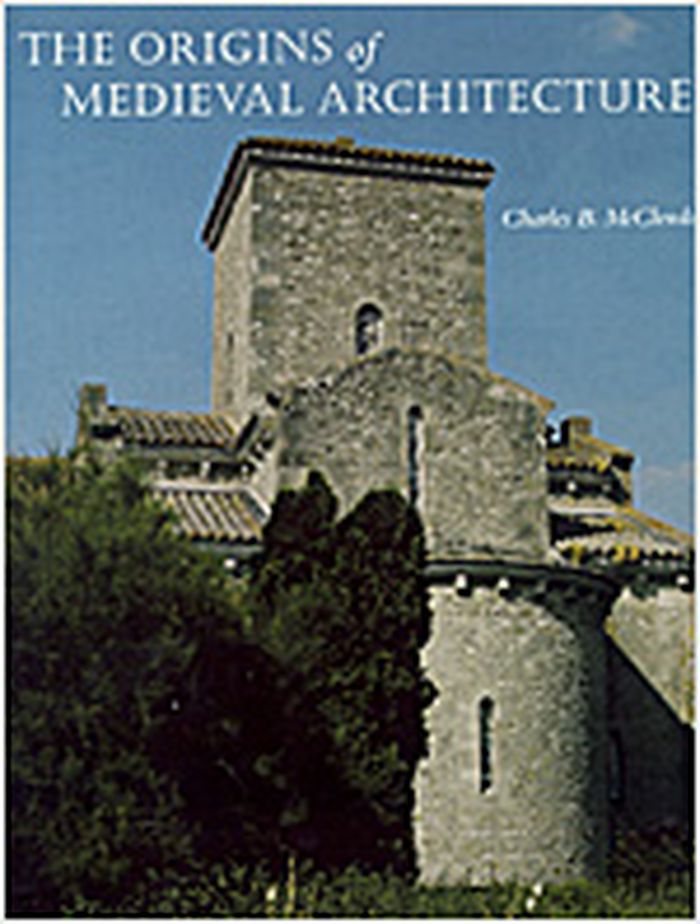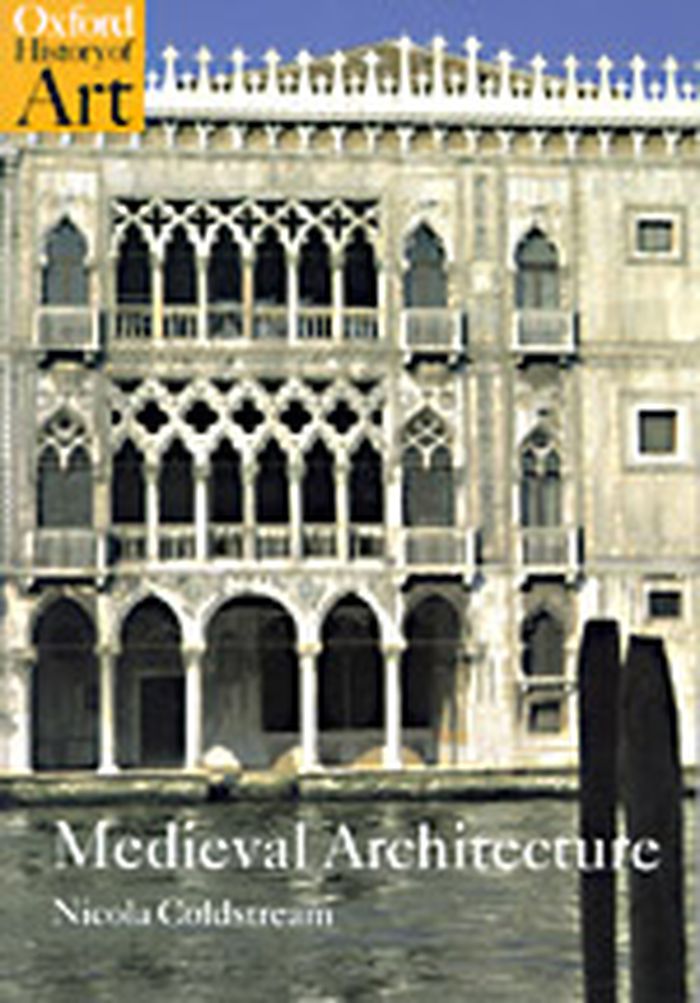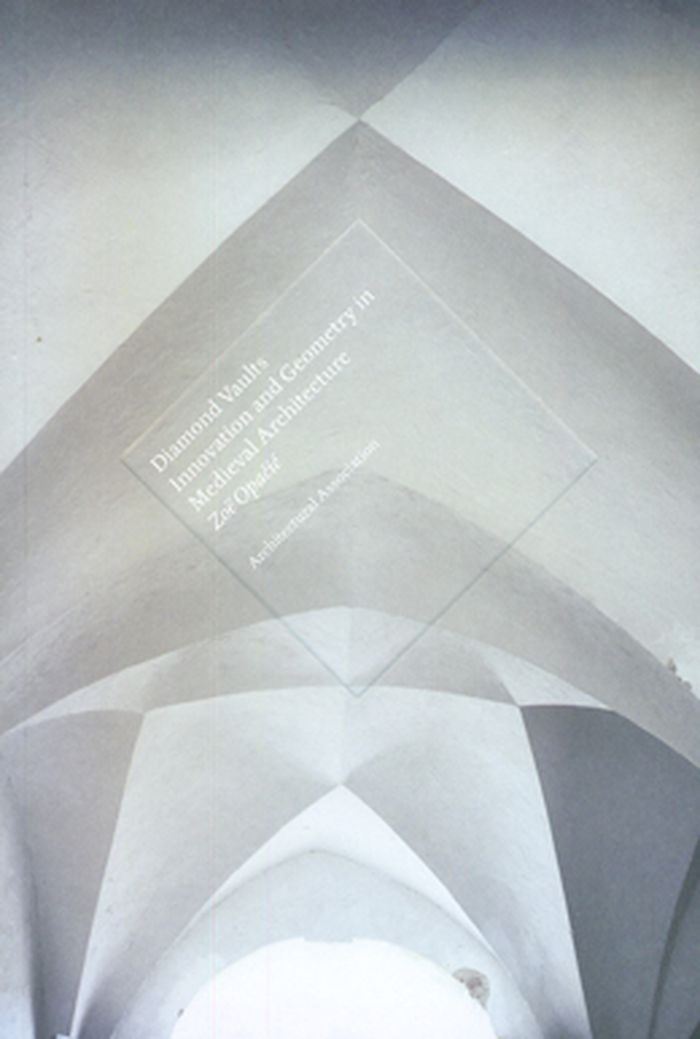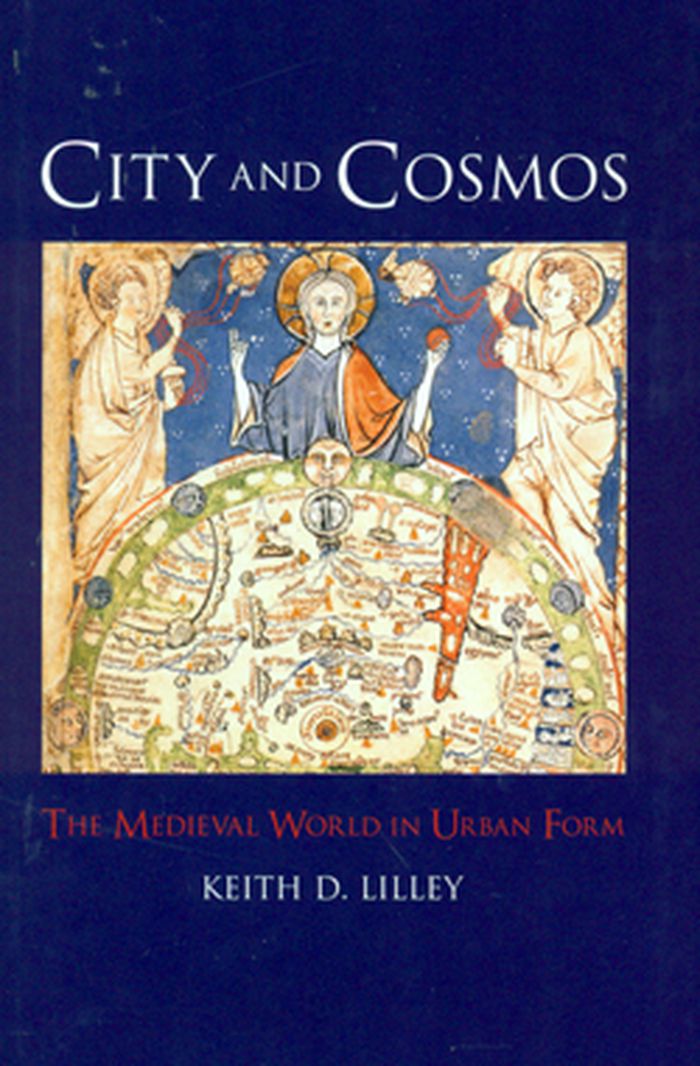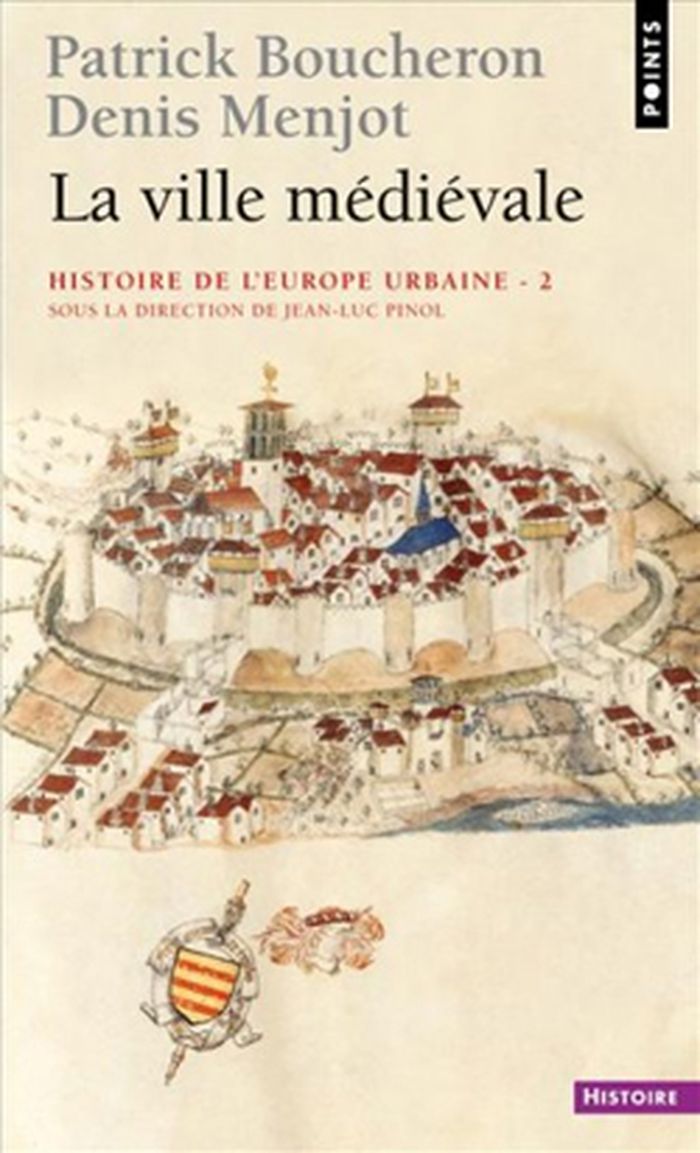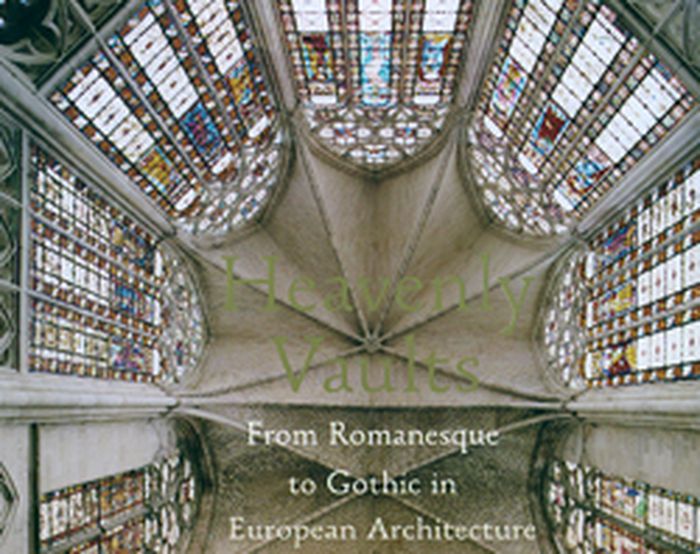$60.95
(available to order)
Summary:
L’ouvrage a pour fil conducteur les rapports complexes entre les architectures et décors fictifs et les notions d’illusion, de fiction et de réalité de l’Antiquité au Moyen Âge. Il s’intéresse aussi à la réception ultérieure des architectures et décors fictifs antiques et médiévaux. La première partie, « « La ville et ses monuments : fiction et mémoire », est centrée sur(...)
History until 1900, Middle Ages
April 2022
Architectures et décors fictifs antiques et médiévaux
Actions:
Price:
$60.95
(available to order)
Summary:
L’ouvrage a pour fil conducteur les rapports complexes entre les architectures et décors fictifs et les notions d’illusion, de fiction et de réalité de l’Antiquité au Moyen Âge. Il s’intéresse aussi à la réception ultérieure des architectures et décors fictifs antiques et médiévaux. La première partie, « « La ville et ses monuments : fiction et mémoire », est centrée sur l’image de la ville entre modèle idéal vitruvien ou modèle mythique virgilien et imaginaire de l’espace urbain. La deuxième partie, « Architecture et décor : poétiques de la description », permet de voir qu’à travers la pratique, artistique ou littéraire, des architectures et des décors fictifs, il y a toute une poétique des rapports entre espace réel et espace fictif, entre mémoire et création. La troisième, « La représentation architecturale : entre espace fictif et espace allégorique », a pour sujet la notion d’espace symbolique, du « temple » allégorique vitruvien de l’architecture aux allégories du temple de l’âme et à la Jérusalem céleste, et de l’Antiquité à l’époque romantique.
History until 1900, Middle Ages
$81.50
(available to order)
Summary:
This book is the first devoted to the important innovations in architecture that took place in western Europe between the death of emperor Justinian in A.D. 565 and the tenth century. During this period of transition from Late Antiquity to the Middle Ages, the Early Christian basilica was transformed in both form and function. Charles B. McClendon draws on rich(...)
History until 1900, Middle Ages
January 2005, New Haven
The origins of medieval architecture : building in Europe, A.D. 600-900
Actions:
Price:
$81.50
(available to order)
Summary:
This book is the first devoted to the important innovations in architecture that took place in western Europe between the death of emperor Justinian in A.D. 565 and the tenth century. During this period of transition from Late Antiquity to the Middle Ages, the Early Christian basilica was transformed in both form and function. Charles B. McClendon draws on rich documentary evidence and archaeological data to show that the buildings of these three centuries, studied in isolation but rarely together, set substantial precedents for the future of medieval architecture. He looks at buildings of the so-called Dark Ages—monuments that reflected a new assimilation of seemingly antithetical “barbarian” and “classical” attitudes toward architecture and its decoration—and at the grand and innovative architecture of the Carolingian Empire. The great Romanesque and Gothic churches of subsequent centuries owe far more to the architectural achievements of the Early Middle Ages than has generally been recognized, the author argues.
History until 1900, Middle Ages
Medieval architecture
$31.95
(available to order)
Summary:
Medieval architecture comprises more than the traditional image of Gothic cathedrals and the castles of chivaltry. A great variety of buildings - synagogues, halls, and barns - testifies to the diverse communities and interests in western Europe in the centuries between 1150 and 1550. This book looks at their architecture from an entirely fresh perspective. It shifts(...)
History until 1900, Middle Ages
June 2002, Oxford / New York
Medieval architecture
Actions:
Price:
$31.95
(available to order)
Summary:
Medieval architecture comprises more than the traditional image of Gothic cathedrals and the castles of chivaltry. A great variety of buildings - synagogues, halls, and barns - testifies to the diverse communities and interests in western Europe in the centuries between 1150 and 1550. This book looks at their architecture from an entirely fresh perspective. It shifts the emphasis away from such areas as France towards the creativity of other regions, including central Europe and Spain. It treats the subject thematically, seeking what all buildings, both religious and secular, have in common, and how they reflect the material and spiritual concerns of the people who built and used them. It considers how and why, after four centuries of shaping the landscape and urban patterns of Europe, medieval styles were supereded by classicism.
History until 1900, Middle Ages
$27.00
(available to order)
Summary:
The diamond vaults of Central Europe are among the most original yet little-known creations of medieval architecture : ceilings so complex that, as their name suggests, they recall the facets of a cut gemstone. First appearing in 1471 at the palace of Albrechtsburg in Meissen, Germany, they were employed for almost a century in locations as far apart as Gdansk on the(...)
Diamond vaults : innovation and geometry in medieval architecture
Actions:
Price:
$27.00
(available to order)
Summary:
The diamond vaults of Central Europe are among the most original yet little-known creations of medieval architecture : ceilings so complex that, as their name suggests, they recall the facets of a cut gemstone. First appearing in 1471 at the palace of Albrechtsburg in Meissen, Germany, they were employed for almost a century in locations as far apart as Gdansk on the Baltic to Bechyne in southern Bohemia (today’s Czech Republic). From a historical point of view, diamond vaults show the continuing vitality of Gothic architecture in Central Europe, at a time when the rediscovery of the classical past in Renaissance Italy was changing the course of building. Architecturally, they offer some of the most impressive examples of geometrical experimentation and versatility in both secular and sacred spaces. But perhaps their greatest appeal is visual. The stark, concave–convex shapes of diamond vaults, with their lyrical play of the effects of light and shade, strike us today as incredibly modern. "Diamond vaults" explores this singular phenomenon. A text by Zoë Opacic explores the vault’s origins, topography, structure and design, as well as function and context, focusing primarily on the Czech Republic, which boasts some of the best examples, and contrasting them with those in Germany and Gdansk. One of the chief aims is to demonstrate the undoubted aesthetic appeal of this form, which has continued to inspire generations of architects.
History until 1900, Middle Ages
books
$19.95
(available to order)
Summary:
Complété par plus de 130 illustrations, cet ouvrage fait revivre l'histoire du catharisme, un mouvement religieux du Moyen Âge, depuis sa naissance au XIIe siècle jusqu'à son anéantissement par la coisade des Albigeois et les persécutions légitimées par l'Inquisition au XIVe siècle. La présentation des cathares couvre leurs pratiques et leurs convictions, le mythe de leur(...)
Les cathares secrets et histoire
Actions:
Price:
$19.95
(available to order)
Summary:
Complété par plus de 130 illustrations, cet ouvrage fait revivre l'histoire du catharisme, un mouvement religieux du Moyen Âge, depuis sa naissance au XIIe siècle jusqu'à son anéantissement par la coisade des Albigeois et les persécutions légitimées par l'Inquisition au XIVe siècle. La présentation des cathares couvre leurs pratiques et leurs convictions, le mythe de leur trésor légendaire et leurs liens avec l'ordre des Templiers.
books
April 2009, Köln
History until 1900, Middle Ages
$55.00
(available to order)
Summary:
Keith D. Lilley argues that the medieval mind considered the city truly a microcosm: much more than a collection of houses, a city also represented a scaled-down version of the very order and organization of the cosmos. Drawing upon a wide variety of sources, including original accounts, visual art, science, literature, and architectural history, City and Cosmos offers an(...)
City & cosmos : the medieval world in urban form
Actions:
Price:
$55.00
(available to order)
Summary:
Keith D. Lilley argues that the medieval mind considered the city truly a microcosm: much more than a collection of houses, a city also represented a scaled-down version of the very order and organization of the cosmos. Drawing upon a wide variety of sources, including original accounts, visual art, science, literature, and architectural history, City and Cosmos offers an innovative interpretation of how medieval Christians infused their urban surroundings with meaning.
History until 1900, Middle Ages
La ville médiévale
$22.95
(available to order)
Summary:
Au cours du Moyen Âge se dessinent les contours d'une nouvelle Europe urbaine. Elle constitue l'armature du réseau des villes actuelles. Peut-on parler de « ville médiévale » ? En tout cas avec l'implosion du monde romain, la ville de l'Antiquité disparaît lentement tandis qu'apparaissent de nouvelles réalités urbaines qui ne se laissent plus circonscrire par le cadre(...)
La ville médiévale
Actions:
Price:
$22.95
(available to order)
Summary:
Au cours du Moyen Âge se dessinent les contours d'une nouvelle Europe urbaine. Elle constitue l'armature du réseau des villes actuelles. Peut-on parler de « ville médiévale » ? En tout cas avec l'implosion du monde romain, la ville de l'Antiquité disparaît lentement tandis qu'apparaissent de nouvelles réalités urbaines qui ne se laissent plus circonscrire par le cadre politique et spatial de la cité. Entre les VIIe et Xe siècles, des modèles originaux d'urbanisation se développent, le plus souvent hors du bassin méditerranéen qui fut le berceau de la civitas. Les siècles du « grand progrès » (XIe-début XIVe siècle) sont aussi ceux du développement de nouvelles communautés urbaines. S'y inventent non seulement des manières particulières de travailler, d'habiter et de cohabiter, mais aussi de nouvelles pratiques de gouvernement. Aussi les villes ont-elles peut-être été, dans l'Europe des États monarques que le Moyen Âge lègue à l'époque moderne, les laboratoire des sociétés politiques.
History until 1900, Middle Ages
The Alhambra
$17.95
(available to order)
Summary:
The Alhambra has long been a byword for exotic and melancholy beauty. In his new book, Robert Irwin, Arabist and novelist, examines its history and allure. As guide to this architectural masterpiece, Irwin allows us to fully understand the impact of the Alhambra.
The Alhambra
Actions:
Price:
$17.95
(available to order)
Summary:
The Alhambra has long been a byword for exotic and melancholy beauty. In his new book, Robert Irwin, Arabist and novelist, examines its history and allure. As guide to this architectural masterpiece, Irwin allows us to fully understand the impact of the Alhambra.
History until 1900, Middle Ages
Bâtir au Moyen Âge
$19.95
(available to order)
Summary:
Charpentiers, maçons, tailleurs de pierre, etc. : c'est toute la vie quotidienne des chantiers du Moyen-Age qui est restituée ici. Importance de la main-d'oeuvre, fourniture et prix des matériaux, outillage, transport, répartition du travail, hiérarchie et salaires, place de l'architecte, diversité des lieux investis par les constructeurs et rôle de la loge où(...)
Bâtir au Moyen Âge
Actions:
Price:
$19.95
(available to order)
Summary:
Charpentiers, maçons, tailleurs de pierre, etc. : c'est toute la vie quotidienne des chantiers du Moyen-Age qui est restituée ici. Importance de la main-d'oeuvre, fourniture et prix des matériaux, outillage, transport, répartition du travail, hiérarchie et salaires, place de l'architecte, diversité des lieux investis par les constructeurs et rôle de la loge où travaillent apprentis et compagnons : Philippe Bernardi raconte comment l'on bâtissait au temps des cathédrales. Traitant des divers types de constructions de l'Europe occidentale, et des apports les plus récents de la recherche (sources écrites, iconographiques, archéologiques ou issues des laboratoires), il rend vivante autant qu'il l'élargit l'histoire de ces artisans du Moyen-Âge.
History until 1900, Middle Ages
$81.95
(available to order)
Summary:
The Gothic cathedrals of the middle ages are among the world's greatest architectural achievements. Looking up at the soaring vaulted ceiling of a gothic church, it is impossible not to marvel at the seemingly unending design variations of these transcendent structures. Photographer David Stephenson continues his exploration of the architecturally sublime by focusing his(...)
Heavenly vaults, from Romanesque to Gothic in european architecture
Actions:
Price:
$81.95
(available to order)
Summary:
The Gothic cathedrals of the middle ages are among the world's greatest architectural achievements. Looking up at the soaring vaulted ceiling of a gothic church, it is impossible not to marvel at the seemingly unending design variations of these transcendent structures. Photographer David Stephenson continues his exploration of the architecturally sublime by focusing his camera on the amazing vaulted ceilings of the medieval churches, cathedrals, and basilicas of Europe. Stephenson presents more than eighty romanesque and gothic vaults in kaleidoscopic photographs that reveal their complex geometrical structures, decorative detailing, and ornamental painting in ways they have never before been seen.
History until 1900, Middle Ages

